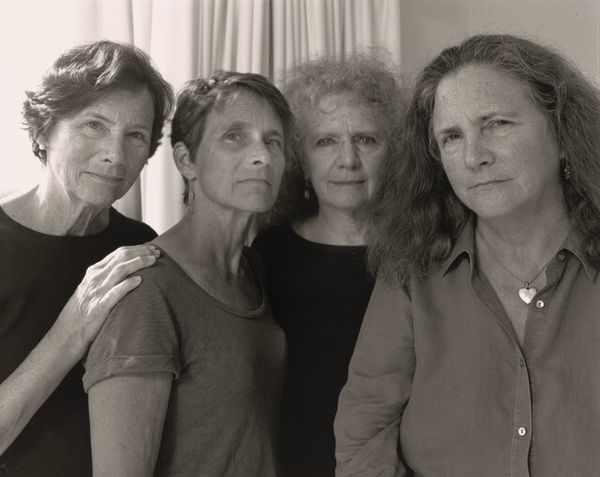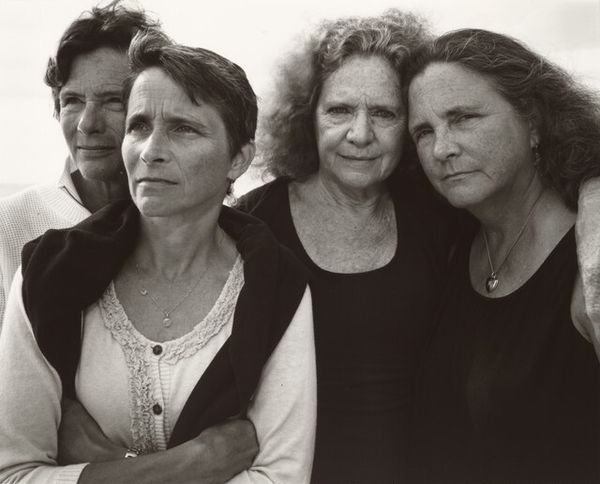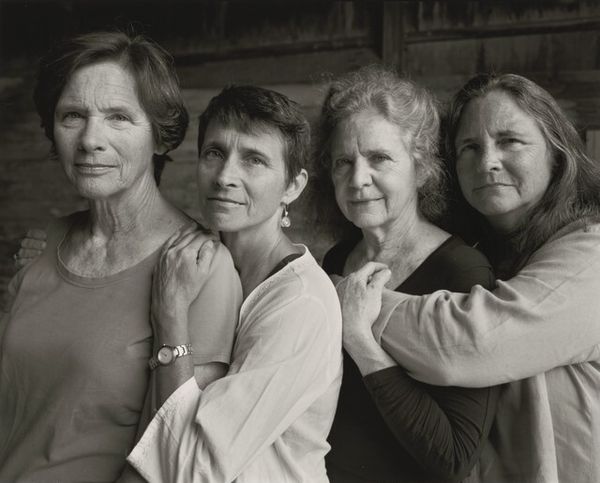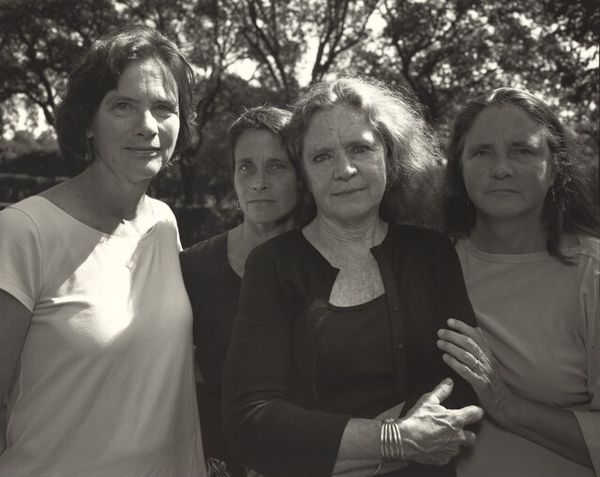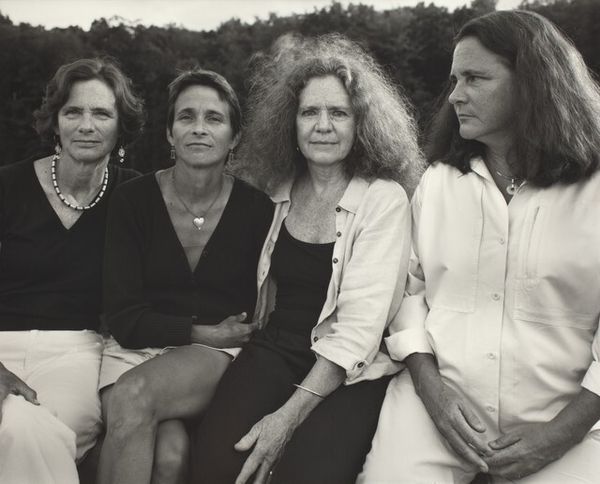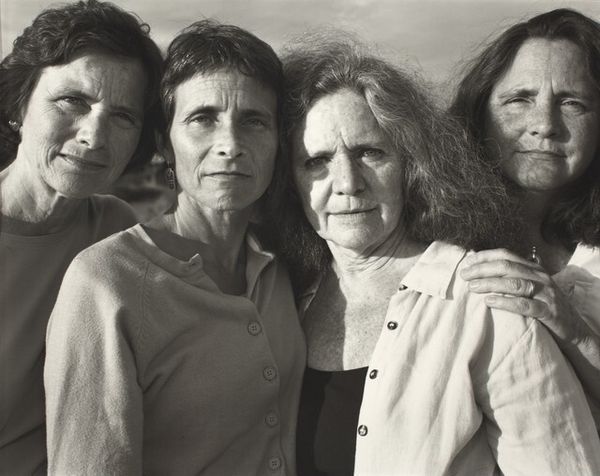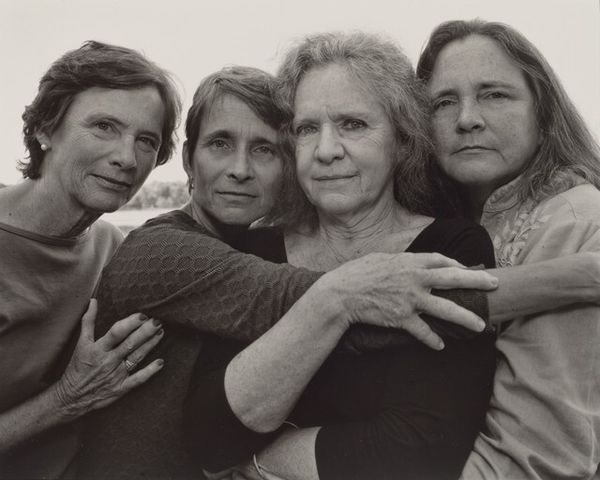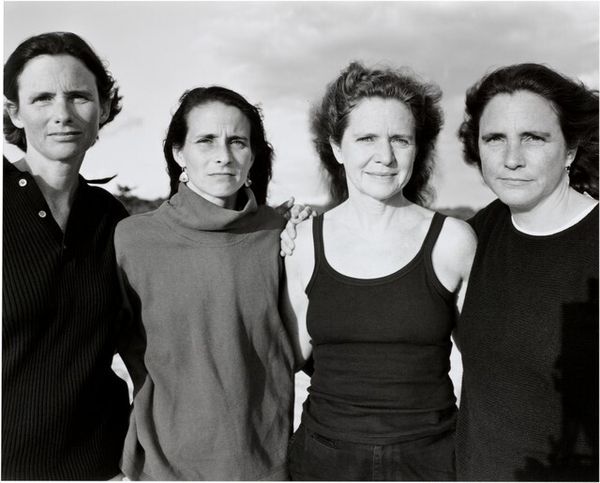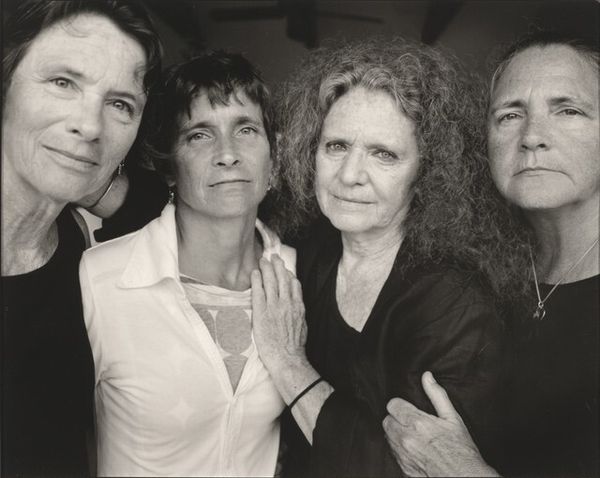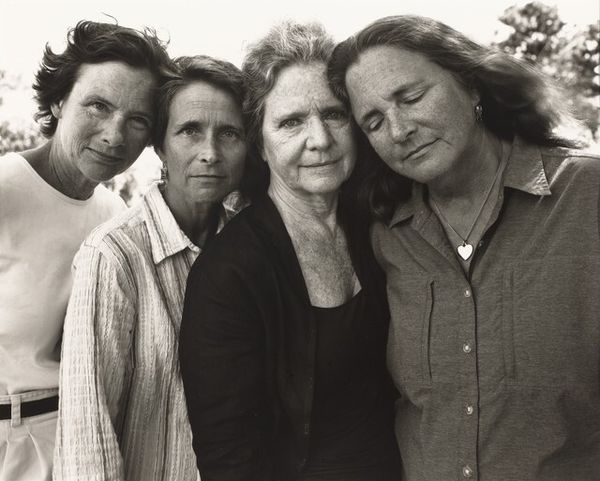
photography, gelatin-silver-print
#
portrait
#
contemporary
#
black and white photography
#
photography
#
historical photography
#
black and white
#
gelatin-silver-print
#
monochrome photography
Dimensions: image: 19.8 x 24.8 cm (7 13/16 x 9 3/4 in.) sheet: 20.4 x 25.4 cm (8 1/16 x 10 in.)
Copyright: National Gallery of Art: CC0 1.0
Curator: What catches your eye right away with this piece, Editor? It’s Nicholas Nixon's "The Brown Sisters, Truro, Massachusetts" from 2009, rendered in gelatin silver print, offering us a study in time and relationship. Editor: Hauntingly simple, yet incredibly layered. The direct gaze is powerful, but the gray scale leeches some joy—as if time is eroding not just their faces but the color in their world. It's stoic, almost severe. Curator: That severity, I think, speaks to the formal weight Nixon places on portraiture. The image, part of an ongoing project he started in 1975, has become a cultural touchstone on the effects of aging and the visual markers of time on female identity and sisterhood. Consider the continuousness, a shared annual ritual for over 40 years now, becoming a cultural timestamp. Editor: Absolutely, and the sisterhood is undeniable; a literal embodiment of women supporting women, right? But the fact that it's Truro, Massachusetts, the setting...there’s a sense of rootedness there. The composition doesn’t give us the romanticism of coastal life; it is stark, exposed like the dunes, the relationship between the figures almost blending into an individual block. Curator: Interestingly, some interpret the unchanging composition—same order of sisters each year—as a kind of psychological defense against the chaos of time. This is something reliably recurring within an impermanent life cycle, capturing mortality head-on. A need of consistency amidst an unavoidable truth. Editor: Makes sense; they confront rather than avert. And what gets me is the gelatin silver; the traditional process is very telling too—the analog captures something less mediated, something very real in the human sense of things, almost demanding an audience with truth and honesty. Curator: Right, this choice anchors Nixon to a tradition that valued process and tangible artifacts. This imbues the photo with an air of permanence; while they themselves evolve, the chosen form reminds us of the importance of historical permanence as part of cultural memory. Editor: So, where would you say Nixon situates himself in the ongoing story of these women, then? Curator: As a custodian of time and relationship, revealing cultural narratives through these repeated portraits. His choice of stark presentation amplifies the honesty of aging; the photo as document, as cultural mirror. Editor: Well put. For me, it resonates as a reflection on the fleeting, and the grounded realities that make up an authentic connection with life, sisterhood, and eventually death.
Comments
No comments
Be the first to comment and join the conversation on the ultimate creative platform.
